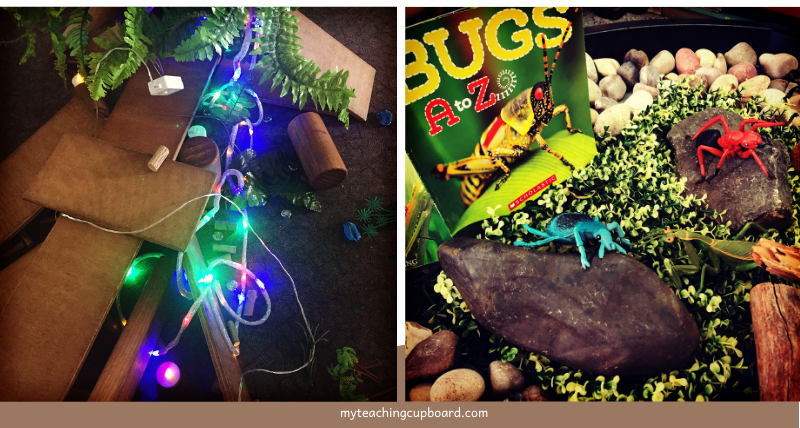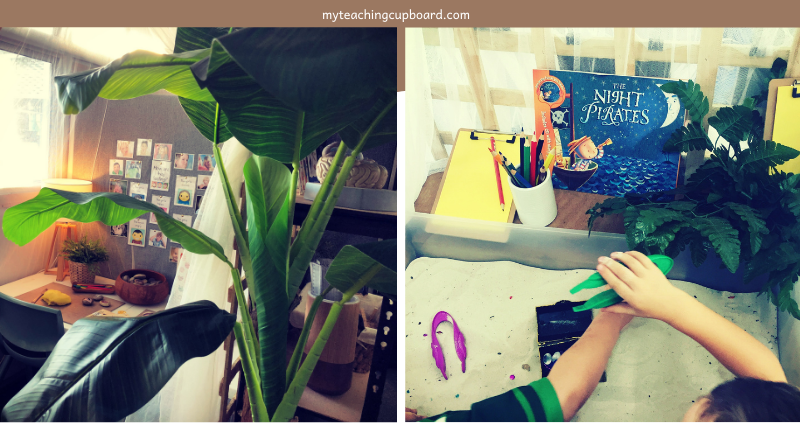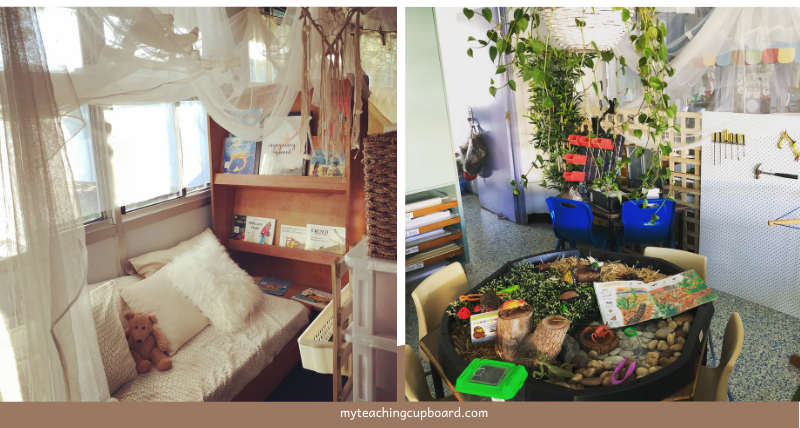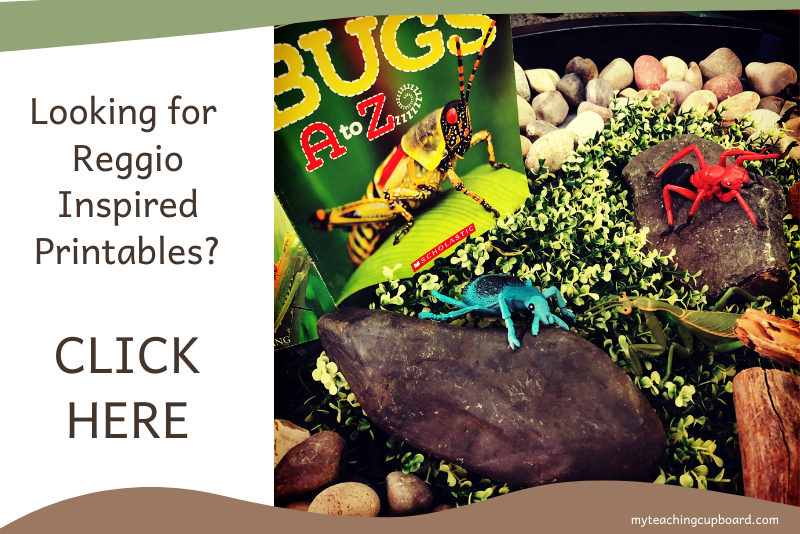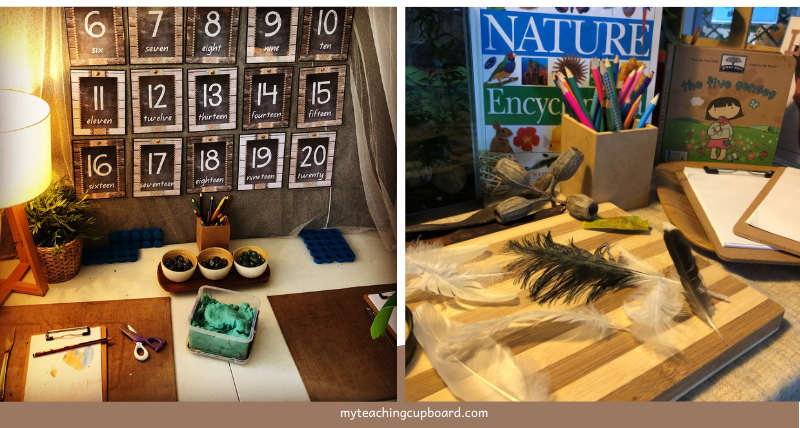Reggio Emilia Provocations
Are you interested in how Reggio Emilia provocations could enhance the teaching and learning in your play-based classroom?
Many play-based teachers are aware of the highly regarded early childhood programs from Reggio Emilia in Italy. I became fascinated with this approach many years ago and have researched it with much interest.
I’ve attended some online training directly from the Reggio Children Online Institute and I would like to share some of what I have learned about the learning provocations they design and offer.
History of the Reggio Emilia Approach
The Reggio Emilia philosophy of education was developed by Loris Malaguzzi (1920-1994) and the parents and teachers in their community. Loris Malaguzzi was the director of the Reggio Emilia program for 40 years and even after he retired in 1985, he remained an active participant in their educational community.
The first Reggio preschool opened in 1963 and now there is a large network of educational schools and services throughout the Italian town of Reggio Emilia and beyond. Their early childhood programs have international acclaim and people travel from all over the world to learn about the Reggio classrooms.
The 3 Core Principles of the Reggio Philosophy
There are 3 core principles underpinning the Reggio philosophy of education and learning. The image of the child, the 100 languages of communication and the environment as a teacher.
The Image of the Child
Central to the philosophy of Reggio Emilia is the image of the child. In this child centered approach to education, the child is valued and respected in a way where each child is seen as competent, capable, and creative.
One of the focal points of our philosophy is the image of the child, who, from the moment he is born, is so eager to feel part of the world that he actively employs a complex (and still not fully appreciated) network of abilities, learning strategies, ways of organising relationships, and creating maps for personal, interpersonal, social, cognitive, affective, and even symbolic orientation. This explicit and public declaration includes not only the child, but humankind in general, as well as the more complex organisational, methodological, and philosophical fabric on which our educational work is based, and which determines its quality. (Loris Malaguzzi, 1997)
Each society has a different view of who the child is and what they are capable of. As a teacher, you already know that most children will live up to what you believe of them.
The Reggio philosophy understands that children have rights and encourage a learning environment where children are respected and listened to. This pedagogy honours the child and their thinking. For this reason, the children of Reggio classrooms are often referred to as co-creators of the learning environment.
If you would like to adopt this philosophy and incorporate Reggio practices in your classroom, you will need to encourage your children to be active contributors and allow them to have an influential voice in their classroom. Together you will need to build a strong community where every child has a voice and is listened to.
If you are interested in learning how to build a strong classroom community, you might be interested in this blog post – How to Build a Classroom Community
100 Languages
The Reggio philosophy is also based on the idea that every child has at least 100 languages in which he or she can communicate and express ideas.
There is a beautiful poem about the 100 languages of children written by Loris Malaguzzi. It is often referred to by the educators of Reggio Emilia. I love the 100 Languages poem so much I made a printable poster of it to display in my room. You can download a copy here if you would like to do that too.
The educators of Reggio Emilia understand that children construct and co-construct knowledge every time they interact with their social and physical environments. The educators firmly believe that the opportunity for children to share their experiences and knowledge with others makes for an enriched educational experience - for everyone.
This belief drives their child-led curriculum and teaching. The reggio child is given the opportunity to communicate through many different languages: drawing, painting, photography, construction, discussions, drama… Not just the written words and numbers so often dominating our traditional classrooms.
The Environment as the Third Teacher
Another core principle of the Reggio Philosophy is that the curriculum must connect to local culture, community, and the environment.
Loris Malaguzzi emphasized that “it was not so much that we need to think of the child who develops himself by himself but rather of a child who develops himself interacting and developing with others” (Rankin 2004, 82).
In the Reggio philosophy, the environment is considered as the third teacher.
The Reggio educators see the first teacher of any child as the parent or family. This includes siblings and extended family members. Our education system acknowledges this and encourages parents and carers to partner with us in the education of their children.
In the Reggio philosophy, the second teacher is the classroom teacher. They believe the classroom teacher needs to take on the role of researcher and curriculum implementor.
The role of the classroom teacher in a Reggio school, is to intentionally design a reflective learning curriculum which engages children in meaningful work and conversation.
The Reggio philosophy believes the environment is the third teacher. If you are interested in creating a learning environment reflecting the Reggio Emilia philosophy, you need to create a learning space that
is aesthetically pleasing
reflects the identity and culture of your children and families
encourages a connection to place
fosters a sense of ownership by the children and families
engages children in exploration, communication, and learning
The physical environment of your classroom is not just a place to deliver the curriculum. A Reggio inspired classroom environment is an integral part of the curriculum.
If you would like to learn more about how the environment can become your third teacher, you might be interested in this blog post – Environment as Third Teacher.
Reggio Provocations
Reggio learning environments rely on learning provocations or invitations to learn as a method to inspire engagement and thinking in the children.
You will discover Reggio inspired learning provocations are the perfect way to teach your curriculum learning intentions. They will also provide your children with a multi-sensory learning experience and help them to develop and represent their thinking in an age-appropriate way.
Respect for children and a belief in their ability and potential is evident in the learning provocations of Reggio Emilia classrooms. There is a richness and a diversity in the materials and experiences they offer.
Very often in the Reggio provocations, there are resources and materials which might concern the traditional classroom teacher. Things like wire, glass, pliers and nails might be considered unsafe in an early childhood setting but the Reggio educators suggest that if you support and model the necessary skills to use these materials, your children will use them with skill and respect.
The learning spaces in Reggio schools have been thoughtfully designed with great attention to detail. Their learning provocations reflect the essential design principles: Emphasis, Balance and Alignment, Contrast, Repetition, Proportion, Movement and White Space.
In the Reggio learning environments, there is a particular emphasis placed on lighting and the way light reflects off surfaces. Educators also carefully use colour and form in their learning invitations.
Every resource in any provocation, no matter how small or seemingly insignificant has been carefully planned and thoughtfully added.
The Reggio educators have an amazing ability to design learning provocations which are a complete reflection of the child. The teachers are able to see the extraordinary in the ordinary and help children to do this too.
An important aspect of Reggio learning invitations is the organisation of all the elements and their inter-relationships with one another. They really are created with extreme intent, care and style.
If this type of learning invitation inspires you like it does me, you will no doubt want to start accumulating beautiful new resources for your classroom. Just remember, the materials you offer in your learning provocations do not need to be expensive though.
Collect free natural items from your local environment. Remember a Reggio inspired curriculum connects to local culture, community, and the environment.
The emphasis of your learning invitation is on the creating of aesthetically pleasing invitations which will draw a child in. An invitation for the child to engage respectfully with the materials. This is related to the careful placement of your resources and the design of the space.
Reggio learning provocations and materials are usually left out for the children to explore and investigate for significant periods of time. The children are encouraged to visit and revisit the materials over and over. In our traditional classrooms, our learning resources are often tucked away in a store room and out of sight.
Reggio Emilia provocations can be influenced by many things:
Nature - found materials collected by the children
Children’s Interests
Conceptual - shadows, light, seasons
Events – a holiday, an excursion or a guest speaker
Curriculum Learning Intentions – mandated skills and knowledge
Art Materials - creative mediums to explore
Questions - from the children or the teacher
Fascinating photos, pictures or a book
Interesting Objects – from travel or local culture
When you offer learning provocations inspired by the Reggio Emilia philosophy, you will notice your children will be absorbed in their explorations and learning. They will have a growing confidence to share their thinking.
You will observe their enthusiasm for school and learning grows. Reggio classrooms are highly engaging and that engagement is contagious. I found a renewed passion for teaching when I started my Reggio journey.
The Reggio philosophy will transform your thinking. The more you learn about and practice the philosophies and learning provocations of Reggio Emilia, the more joy you will see in teaching and learning.
If you are interested in learning more about the Reggio Emilia philosophy, you might like to check out these other blog posts
· Environment as the Third Teacher
· What is a Learning Provocation?
· 3 Steps to Setting Up a Learning Provocation
If you liked this blog post about Reggio Emilia provocations, please consider sharing it...
Just CLICK the sharing box below.👇









